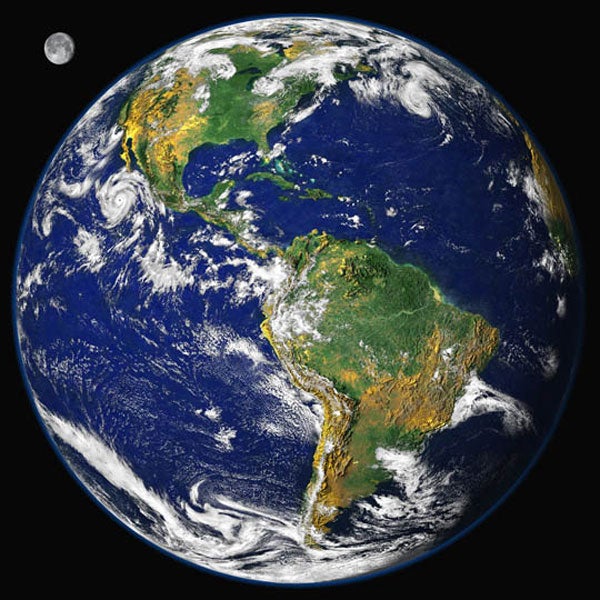
The wobble of Earth’s axis is called precession. While most of us are familiar with our planet’s primary motions — rotation and revolution — few are aware of precession. This characteristic is vividly demonstrated by a spinning top or gyroscope whose tilted axis of rotation gyrates in a circular motion, sweeping out a cone-shaped area in the process.
You can cause a top or gyroscope to precess by gently tapping it while it’s spinning. The “tap” that causes Earth’s axis to precess is gravity from the Sun and Moon and, to a much lesser extent, the planets. Gravity alone, however, won’t do the trick. Earth has a slight equatorial bulge, and it’s this bulge that gets the gravitational tug. In other words, if the planet were a perfect sphere, there would be no precession.
While a top or gyroscope might precess several times each second, a single precession of Earth’s axis takes nearly 26,000 years. The effects — changes in our “pole” stars, a shift in the celestial coordinates of right ascension and declination, and a westward drift of the solstices and equinoxes — are so gradual that most changes take decades to notice. No wonder precession is one of Earth’s “unknown” motions. — Glenn Chaple, Contributing Editor









